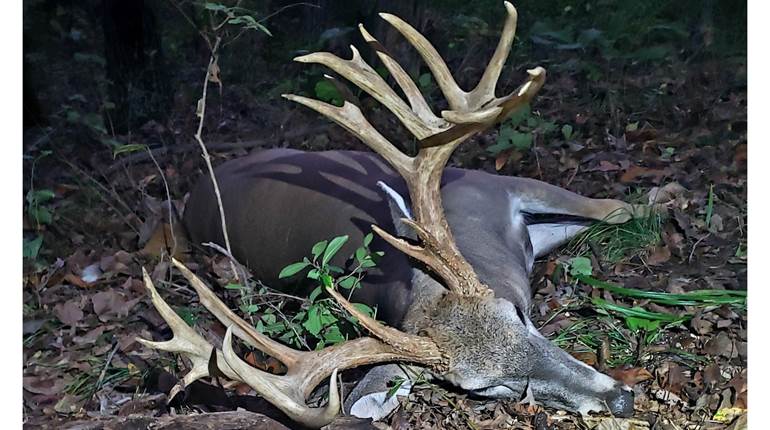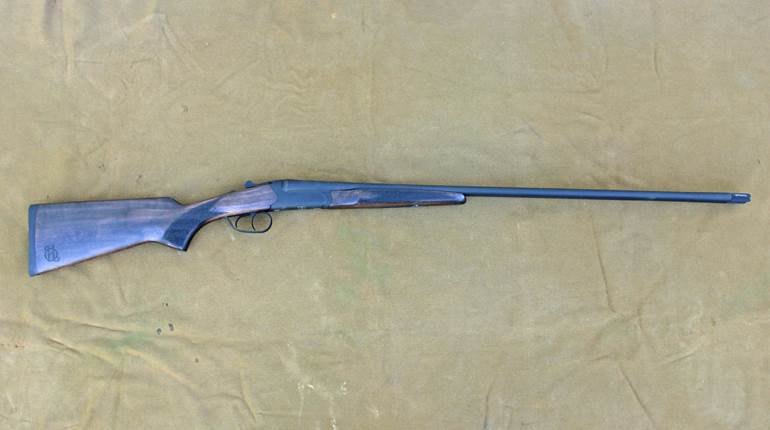
These days, the two most common defensive semi-automatic pistol cartridges still vying for civilian holster space tend to be the ubiquitous 9 mm Luger and the venerable .45 ACP. Yes, the 120-year old .45 ACP cartridge, developed by John Moses Browning, is currently a distant second place when compared to the popularity of the 123-year-old 9 mm round developed by Georg Luger. But considering just how many handgun calibers have fallen by the wayside in more than a century of ammunition development, these two have clearly withstood the test of time.

The 9 mm vs. .45 ACP debate has been reviewed from a variety of angles for many years. We won't be rehashing the majority of those talking points here. Instead, for the sake of this conversation, I'm going to hone in on the performance potential of these two cartridges from another commonly discussed and disputed concealed-carry pistol topic: barrel length.

Since the late 2010s until today, we have witnessed the metamorphosis of polymer-frame 9 mm pistols from the subcompact sizes into the slim and trim micro compact, or micro nine, configurations. The micro nines are now being gently stretched into the hybrids and crossovers that retain the slimness and feature updates of the micros while extending the grip frame and slide assemblies to subcompact lengths. As a result of these changes in pistol design, the currently popular 9 mm subcompacts and micros are sporting barrels ranging somewhere around 3" to 3.5".

There are those who would say that a good rule of thumb for optimal 9 mm pistol performance generally calls for compact and full-size barrels between 3.5" to 5" in length. When firing defensive loads from barrels shorter than 3.5", it's not uncommon to see supersonic defensive loads exhibit muzzle velocities around 70 to 100 f.p.s. slower than those listed by the manufacturer, resulting in subsonic bullet speeds. This drop in velocity can, in turn, affect bullet performance, including penetration and hollow point expansion.

But what would happen if our shorter than 3.5" barrel was used to fire a pistol cartridge that usually operates at subsonic velocities anyway, like the .45 ACP? Yes, the short-barrel bullet speeds are still likely to be slower than listed. But the .45 ACP was designed from its conception to launch relatively heavy bullets at moderate velocities with positive results.

This leads to the burning question of the day: What kind of performance results would we see if we could pit the 9 mm and .45 ACP against each other when fired from the same make and model of pistol outfitted with micro-length barrels? Would the snubby 9 mm maintain enough velocity to produce bullet energies comparable or better than the .45? Or, would the .45's heavier bullets hit harder in this subsonic competition? My inquiring mind wanted to know.

The more pressing question proved to be where to find such a snubby .45 ACP with a matching model chambered in 9 mm? As it turned out, European American Armory Corp. (EAA) recently started importing a series of 2011-pattern pistols that would do the trick. Manufactured in Turkey by Girsan, the Witness2311SC BRAT ships with a 3.4" barrel chambered in either 9 mm or .45 ACP. Here is a closer look at this matched pair of pistols, the ammunition selected and the range results.
EAA's Girsan BRAT Pack
The two Brat pistols sent for this review were mechanically identical to each other, except for the differences in their magazine capacity, unloaded weight and trigger pull. The 9 mm tipped the scales at 29.2 ozs., with an empty magazine in the grip, while the .45 ACP weighed in at 28.3 ozs. The 9 mm pistol has a 17+1 capacity while the .45 has room for 11+1-rounds. Averaged for 10 pulls using a Lyman digital trigger gauge, the 9 mm pistol sent for this evaluation exhibited a single-action trigger pull of 4 lbs., 12.1 ozs., while the .45 ACP measured 4 lbs., 11.4 ozs. Otherwise, one has to look for the serial numbers or caliber markings in order to tell these two pistols apart from each other.

The Girsan Witness2311SC Brat series is based on the 2011 pistol design that blends the reduced weight and increased ammunition capacity of polymer-frame, double-stack pistols with the key features and the lighter single-action trigger pull of competition-style M1911 platforms. The Officer-length, round-top slide features a set of metallic dovetailed three-dot sights, a beveled ejection port and rear cocking serrations. The 3.4" long linked barrel has a belled muzzle that takes the place of a removable barrel bushing. A full-length steel guide rod, supported by a small collar set into the slide, is paired with a single flat-wire recoil spring.

The upper portion of the frame is milled from an aluminum alloy, treated with a matte black anodized finish and the dustcover sports an integral 1.75", four-slot Picatinny accessory rail. The square profile trigger guard is an extension of the one-piece textured black polymer grip module. The vented trigger is made from aluminum with a curved, grooved face.
Controls follow the typical M1911-pattern layout including a checkered left-side slide stop, an extended ambidextrous thumb safety lever, a serrated commander-style hammer and an extended beavertail grip safety with a grooved memory bump. The relatively wide grip features molded in diamond-pattern checkering on all four sides for improved purchase with a beveled polymer magwell extension pinned to the base of the grip frame. These pistols ship with one stainless-steel Check-Mate magazine. These black finish BRATs are the most affordably priced members of the 2311 series with a suggested retail price of $719.

Ammunition Selection
When testing some handgun calibers side-by-side, it's possible to find loads with similar bullet weights for comparison, for example, a .38 Spl. topped with a 125-grain bullet versus a 9 mm launching a 124-grain bullet. But in this case, the commonly available 9 mm and .45 ACP practice and defense-grade loads do not share similar bullet weights. It's also possible to skew the results in favor of a given cartridge using exotic bullet weights or boutique loads with extra high pressure powder charges. To keep things as fair as possible, specialized, lightweight bullet and +P loads were omitted for both calibers. Instead, the more common bullet weights and styles were fired at standard pressure levels from each gun.

For formal testing, the 9 mm practice-grade category was covered by a Winchester USA Ready 115-grain flat-nose full-metal jacket. The two defensive-grade loads included SIG Sauer's Elite Performance V-Crown 124-grain jacketed hollow point and Hornady's Custom 147-grain XTP. On the .45 ACP side, the classic "ball" load was represented by Speer's Lawman 230-grain full-metal jacket. The personal protection rounds included a SIG Sauer Elite Performance V-Crown 200-grain jacketed hollow point and Hornady's Critical Defense 185-grain FTX.

Shooting Range Results
At the shooting range, the two Brats were put through their paces using their provided Check-Mate brand magazines, along with a few spares provided by EAA. Throughout the course of informal and formal testing, the Brats fed, fired and ejected practice and premium-grade loads without any malfunctions. The fit and finish was top-shelf, and the controls were clean and reliable in their operations. But it should come as no surprise that the .45 ACP version generated relatively stout levels of felt recoil while the 9 mm model kept recoil in the moderate range.

I've had friends at my FFL and the shooting range who have squinted at the Brats much as I did the first time I picked one up due to their short slide and competition grip configuration. But any questions hovering around why EAA and Girsan would offer this curious looking pistol feature combination evaporate with the first pull of the trigger. The grip frame fills the shooting hands to provide plenty of purchase and added control while the short slide essentially eliminates any forward weight at the muzzle to pull the pistol down. The result is an impressively quick handling and controllable platform that provides a positive and enjoyable shooting experience.
A Garmin Xero C1 Pro chronograph was on hand to capture the bullet velocity averages for 10-shot strings. The three 9 mm loads lost between 67 to 100 f.p.s. of muzzle velocity when compared to the manufacturers' listed velocities. This led to a corresponding drop in bullet energy of 41 to 49 ft.-lbs., depending on the load fired. Here are the complete results for the 9 mm Brat:

For the three .45 ACP loads used for formal testing, the muzzle velocity fell by 75 to 133 f.p.s. on average with bullet energies reduced by 59 to 100 ft-lbs. depending on the ammunition used. Here are the complete results for the .45 ACP pistol:

Parting Shots
Heading into this particular 9 mm vs. .45 ACP comparison, I was expecting one caliber or the other to exhibit at least a bit of a decisive edge over the other when fired from short-barrel pistols like the 3.4" EAA Girsan Witness2311SC Brats . But that was not quite the case. Accuracy was close enough that I'm going to call it a tie since the differences in average extreme spread (0.14") could reasonably be attributed to differences in bullet diameter.
According to the limited test results shown here, the .45 ACP was the hardest hitter (352 ft.-lbs.) when firing the 185-grain Hornady load. But it was only 29 ft-lbs. more energetic than the hottest of the 9 mm test loads, which was the SIG Sauer 124-grain load (323 ft.-lbs.). This is a notable difference but not an astronomical one.

I went back to the tables to look across the bullet energy numbers for all of the loads tested and found there was enough of an overlap between the 9 mm and .45 ACP loads to try an experiment. I haven't seen done in other comparative evaluations like this one, but I went ahead and averaged energy results for each caliber. The 9 mm exhibited a 298 ft-lb. average with the .45 ACP coming in at 294 fit-lbs. Whether or not this is a particularly useful piece of data, it is indicative of sub 3.5" barrels leveling the performance potential playing field for 9 mm and .45 ACP pistols.

So, what to do with the results of this range test? It seems likely that the 9 mm pistol fans are going to rally around this cartridge's more moderate levels of felt recoil and increased ammunition capacity. These qualities have fueled this caliber's popularity for some time now. As for the .45 ACP devotees, they are likely to embrace the higher levels of felt recoil and sacrifice some ammunition capacity in order to stick with the larger caliber they prefer. But that's par for the course with just about any .45 ACP pistol platform these days. Both calibers are valid choices since the short-barrel performance is comparable with the right ammunition. Whichever caliber you prefer, EAA's catalog of Girsan single-stack M1911 and double-stack 2011-pattern pistols have got you covered. For more information, visit eaacorp.com.
EAA Corp. Witness2311SC Brat Specifications
Importer: European American Armory Corp. (EAA)
Manufacturer: Girsan, Turkey
Action Type: recoil-operated, centerfire, semi-automatic pistol
Chambering: 9 mm Luger, .45 ACP
Barrel: 3.4"
Rifling: six-groove 1:10" RH (9 mm); 1:16" RH (.45 ACP)
Finish: Black Cerakote
Grips: checkered black polymer
Magazine: 17-round detachable box (9 mm); 11-round detachable box (.45 ACP)
Sights: dovetailed white dot front; dovetailed white dot low profile square notch rear
Overall Length: 7"
Height: 6"
Width: 1.28" (grip)
Weight: 29.2-oz. (9 mm, unloaded); 28.3-oz. (.45 ACP, unloaded)
Accessories: foam lined storage case, one magazine, bore brush, trigger lock, owner's manual
MSRP: $719



































